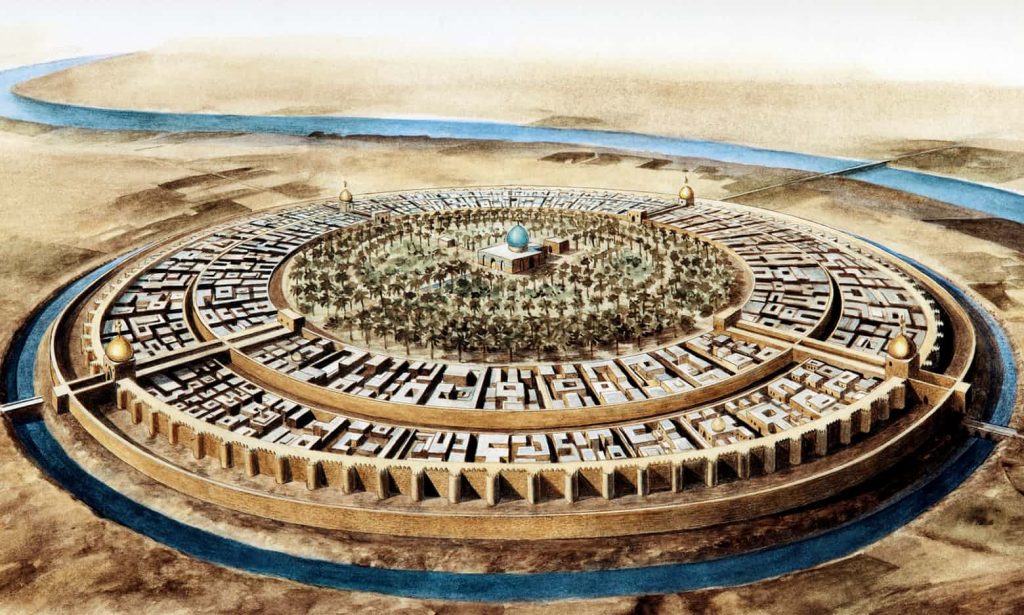Abbasid Baghdad’s shock-and-awe diplomacy

Baghdad in the 10th century. The Abbasid Caliph Al Mansur commissioned the building of a perfectly round city in 762, possibly as a tribute to Euclid
With diplomacy uppermost in our minds as Russian troops stay parked on Ukraine’s border, consider the tactics traditionally used by great powers to send a forceful, even intimidating message.
The Abbasids used ostentatious ornamentation as a shock and awe strategy. Their empire is considered to have been at its highest point during the reign of Harun Al Rashid. He was the fifth caliph, ruling his vast kingdom from 786 to 809. At its height, the Abbasid caliphate was 6,500 kilometres from east to west, its wealth was fabled and it enjoyed enormous admiration for the unusualness and attractiveness of its unique project – creating a Muslim commonwealth, a multi-ethnic empire.
The fifth caliph’s wealth and reach is considered impressive but it is one of his successors whose unique diplomatic strategy is admiringly recorded in the history books. Caliph Muqtadir, who ruled from 908 to 932, had a spectacular tree fashioned out of pure gold and silver. On the tree sat beautifully chased metal birds, who twittered and opened their wings, making them seem life-like. The set-up so awed Byzantine diplomats visiting Baghdad to negotiate a difficult deal, they were presumably thrown off their game.
(Read other pieces on diplomatic shock and awe in the context of the current Russian impasse here and here.)

